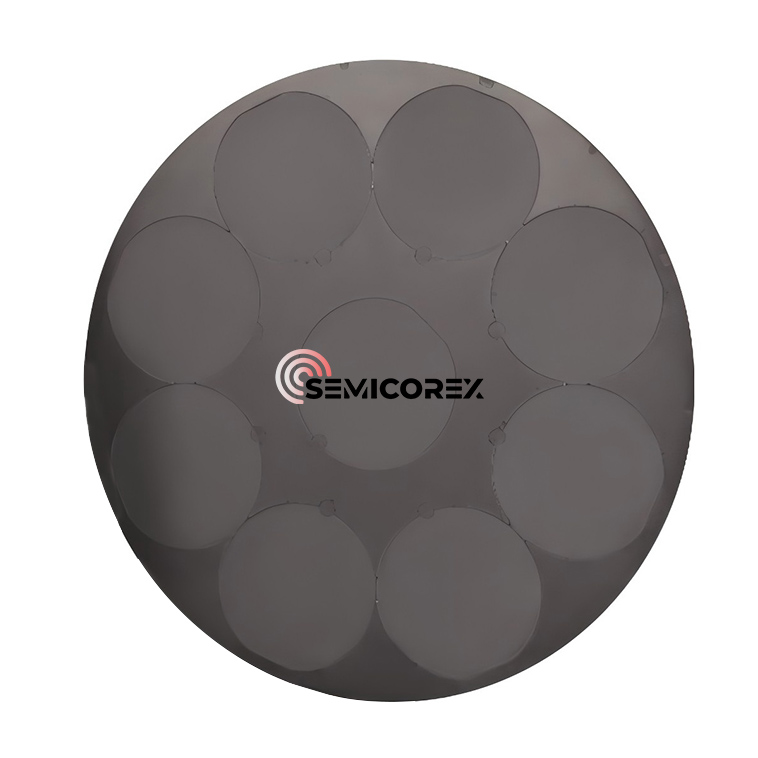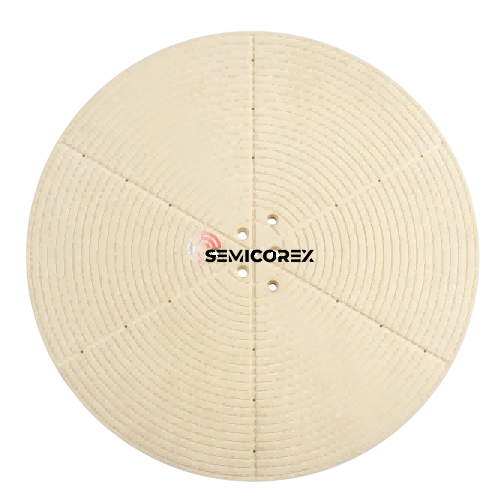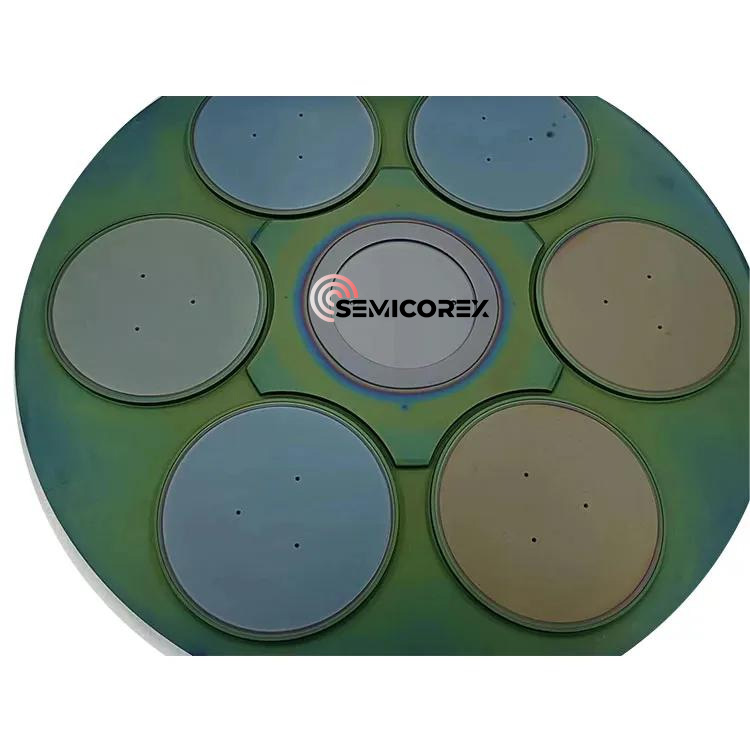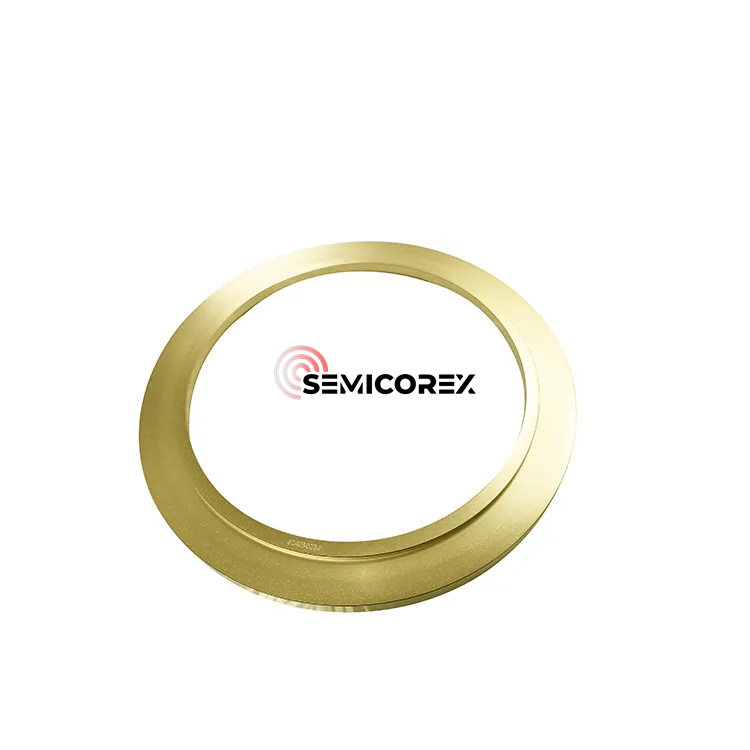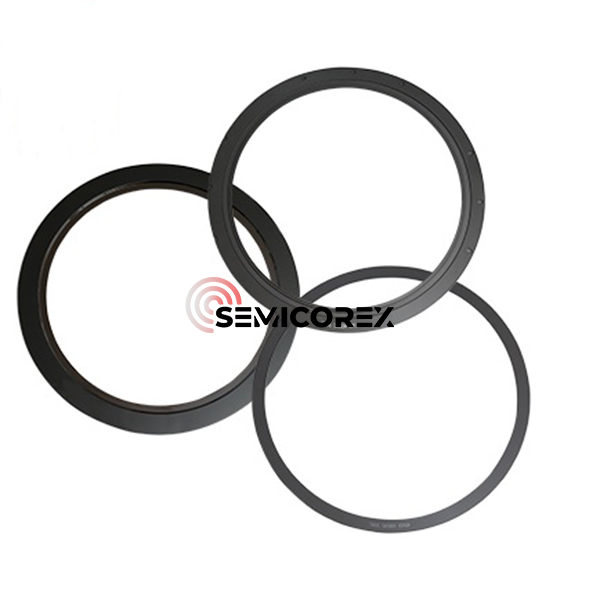
- English
- Español
- Português
- русский
- Français
- 日本語
- Deutsch
- tiếng Việt
- Italiano
- Nederlands
- ภาษาไทย
- Polski
- 한국어
- Svenska
- magyar
- Malay
- বাংলা ভাষার
- Dansk
- Suomi
- हिन्दी
- Pilipino
- Türkçe
- Gaeilge
- العربية
- Indonesia
- Norsk
- تمل
- český
- ελληνικά
- український
- Javanese
- فارسی
- தமிழ்
- తెలుగు
- नेपाली
- Burmese
- български
- ລາວ
- Latine
- Қазақша
- Euskal
- Azərbaycan
- Slovenský jazyk
- Македонски
- Lietuvos
- Eesti Keel
- Română
- Slovenski
- मराठी
- Srpski језик
CVD SiC Focus Ring
Through a process of chemical vapor deposition (CVD), Semicorex CVD SiC Focus Ring is meticulously deposited and mechanically processed to achieve the final product. With its superior material properties, it's indispensable in the demanding environments of modern semiconductor fabrication.**
Send Inquiry

Advanced Chemical Vapor Deposition (CVD) Process
The CVD process employed in the manufacture of the CVD SiC Focus Ring involves the precise deposition of SiC into specific shapes, followed by rigorous mechanical processing. This method ensures that the material’s resistivity parameters are consistent, thanks to a fixed material ratio determined after extensive experimentation. The result is a focus ring with unparalleled purity and uniformity.
Superior Plasma Resistance
One of the most compelling attributes of the CVD SiC Focus Ring is its exceptional resistance to plasma. Given that focus rings are directly exposed to plasma within the vacuum reaction chamber, the need for a material capable of enduring such harsh conditions is paramount. SiC, with a purity level of 99.9995%, not only shares silicon’s electrical conductivity but also offers superior resistance to ionic etching, making it an ideal choice for plasma etching equipment.
High Density and Reduced Etching Volume
Compared to silicon (Si) focus rings, the CVD SiC Focus Ring boasts a higher density, which significantly reduces the etching volume. This property is crucial in extending the lifespan of the focus ring and maintaining the integrity of the semiconductor manufacturing process. The reduced etching volume translates to fewer interruptions and lower maintenance costs, ultimately enhancing production efficiency.
Wide Bandgap and Excellent Insulation
The wide bandgap of SiC provides excellent insulation properties, which are essential in preventing unwanted electrical currents from interfering with the etching process. This characteristic ensures that the focus ring maintains its performance over extended periods, even under the most challenging conditions.
Thermal Conductivity and Resistance to Thermal Shock
CVD SiC Focus Rings exhibit high thermal conductivity and a low expansion coefficient, rendering them highly resistant to thermal shock. These properties are particularly beneficial in applications involving rapid thermal processing (RTP), where the focus ring must withstand intense heat pulses followed by rapid cooling. The ability of the CVD SiC Focus Ring to remain stable under such conditions makes it indispensable in modern semiconductor manufacturing.
Mechanical Strength and Durability
The high elasticity and hardness of the CVD SiC Focus Ring provide excellent resistance to mechanical impact, wear, and corrosion. These attributes ensure that the focus ring can endure the rigorous demands of semiconductor fabrication, maintaining its structural integrity and performance over time.

Applications Across Various Industries
1. Semiconductor Manufacturing
In the realm of semiconductor manufacturing, the CVD SiC Focus Ring is an essential component of plasma etching equipment, particularly those utilizing capacitive coupled plasma (CCP) systems. The high plasma energy required in these systems makes the CVD SiC Focus Ring’s plasma resistance and durability invaluable. Additionally, its excellent thermal properties make it well-suited for RTP applications, where rapid heating and cooling cycles are common.
2. LED Wafer Carriers
The CVD SiC Focus Ring is also highly effective in the production of LED wafer carriers. The material’s thermal stability and resistance to chemical corrosion ensure that the focus ring can withstand the harsh conditions present during LED fabrication. This reliability translates to higher yields and better-quality LED wafers.
3. Sputtering Targets
In sputtering applications, the CVD SiC Focus Ring’s high hardness and resistance to wear make it an ideal choice for sputtering targets. The focus ring’s ability to maintain its structural integrity under high-energy impacts ensures consistent and reliable sputtering performance, which is critical in the production of thin films and coatings.

